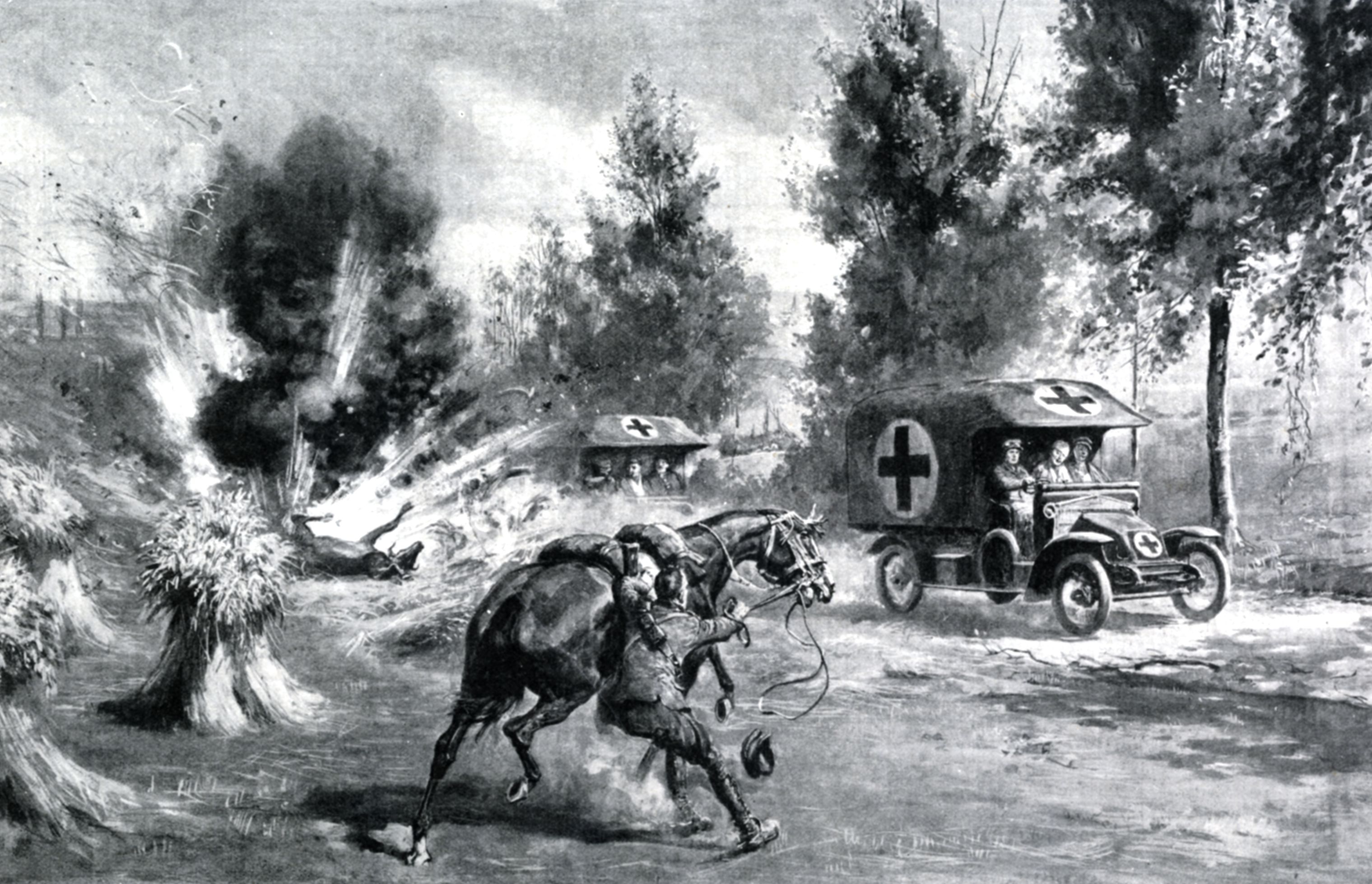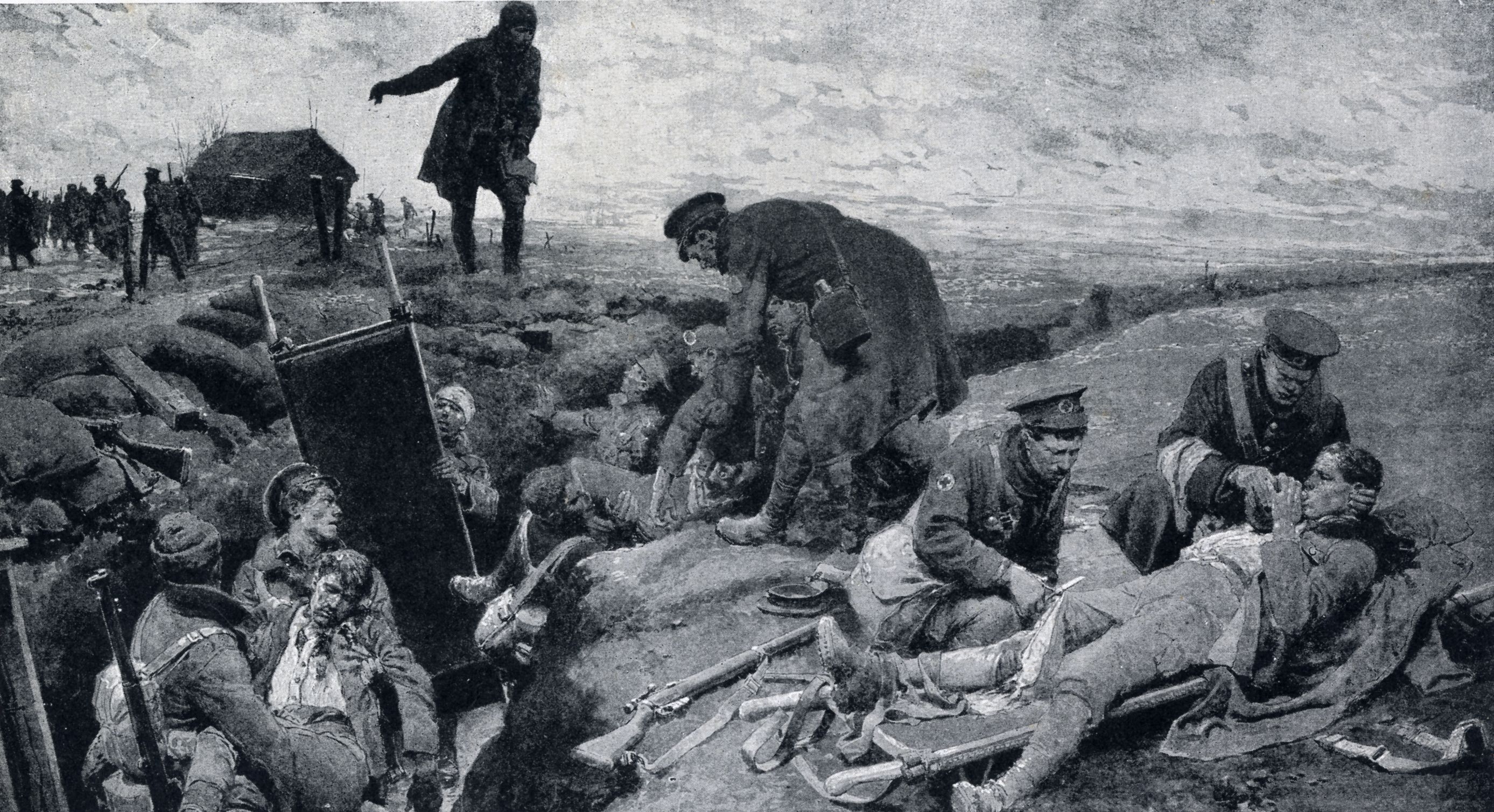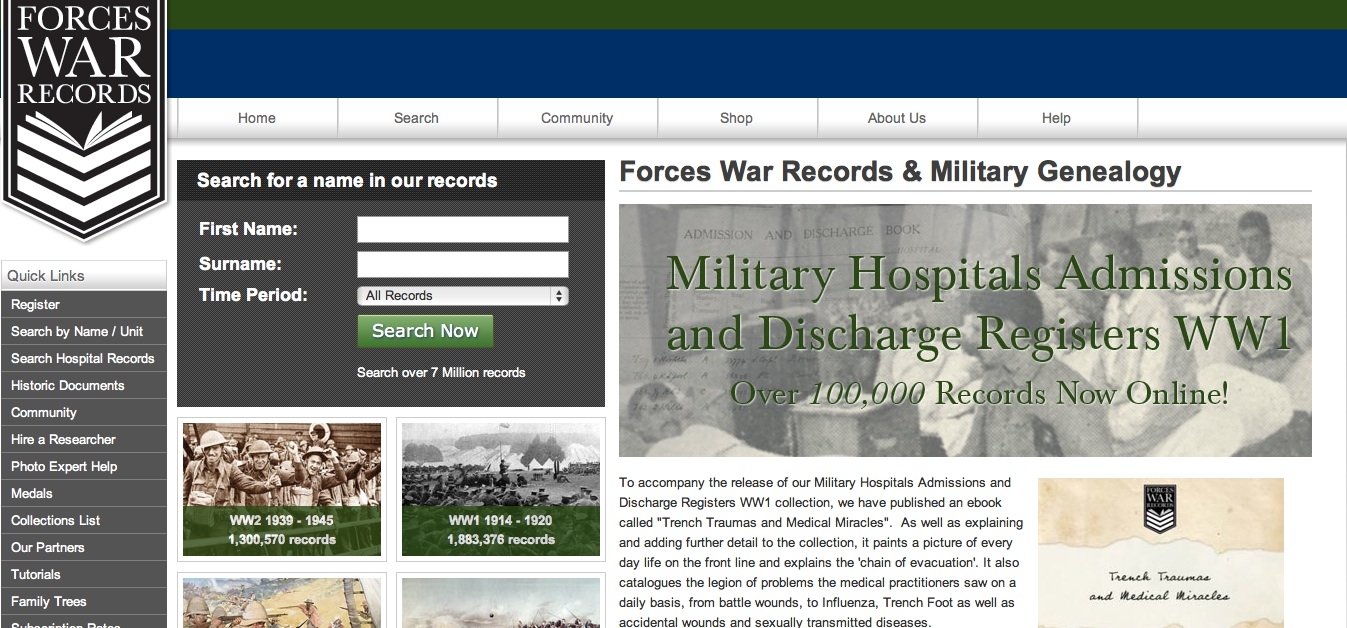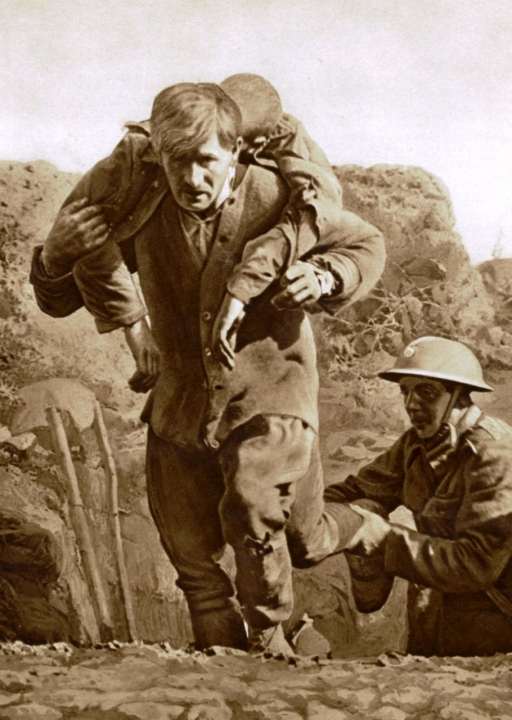UK military genealogy specialists, Forces War Records, have now transcribed 100,000 medical records of British First World War soldiers as part of a project to make them available online. Nicki Giles, from Forces War Records, considers a doctor’s life on the Western Front.
Forces War Records’ ‘Military Hospitals Admissions and Discharge Registers WW1’ collection debuted in October 2014, with 20,000 records out of 1.5 million having already been transcribed. Our data entry team has been working extremely hard since then, and in less than four months the collection has ballooned to include 100,000 records.
There’s still a way to go, but we’re on course to have the bulk of the collection digitised for public search by the end of the year 2016. Keep an eye out to see if your relative is included in it!
According to The Times newspaper, 10th August 1951, an army doctor’s life is a thing of conflict in more ways than one: “Army doctors are members of two professions, and unless they have mastered them both they fail to do their duty. They must be soldiers knowing something of the structure of armies and of their ways in peace and war; lacking that essential knowledge they cannot give their full service in keeping troops healthy at all times and in saving life under fire.” No pressure, then.
When World War One broke out in 1914, doctors itched to sign up and give their all for Britain in just the same way as most young men of the time.
At the start of the conflict the Royal Army Medical Corps numbered just 9,000 men; by the end, it boasted a strength of 133,000. These men, as ‘Twenty Years After the Battlefields of 1914-18, Then & Now’ edited by Major General Sir Ernest Swinton explains, played a massive role in keeping our soldiers safe.
Over nine million dead or wounded men passed through the army hospitals, with 1.6 million being successfully patched up and returned to the Front, while six million were carried from there to base and 2.26 million were evacuated back to England.

Motor ambulances under fire on the Western Front (Forces War Records Archive)
In the course of their duties almost 7,000 RAMC men lost their lives, with over 6,500 earning Gallantry awards, including an impressive seven Victoria Crosses, two with Bar, and 499 Distinguished Service Orders. That means 1:20 of the men serving with the RAMC were honoured for their bravery.
You might wonder how such a high proportion were given an opportunity to demonstrate their valour, since it is forbidden under the Geneva Convention to engage a doctor or ambulance wearing a red cross in battle.
First of all, not all combatants were aware of the rules of the Convention, or cared if they were.
‘Twenty Years After’ contains a vivid account by Mr Francis Brett Young, a Major in the RAMC, of an attack on a British field dressing station in East Africa: “In a second the whole place was swept by maxim fire, hellishly loud in the bush, and bullets were singing everywhere… There followed a frantic flight through the bush with the wounded, the German askaris in hot pursuit.
“That kind of thing happened not infrequently in open warfare. At any time aid-posts and dressing-stations were liable to be overrun; and enemy native troops were not taught to have much respect for the Red Cross as the non-combatant symbol of succour.”
Exposed
Another thing that put medics’ lives in danger was their general proximity to the battlefield. As Forces War Records’ own ‘Trench Traumas and Medical Miracles’ booklet explains, RAMC functions began at the regimental aid post, just metres back from the trenches. These were extremely basic first aid stations, potentially housed simply in a hole in the ground, and very exposed to enemy fire.
Towards the end of the war mobile units for hygiene, bacteriology, radiography, dentistry and blood transfusions all occasionally were sent this far forward, putting the lives of many medics at risk. The larger the emergency or offensive, the more likely that RAMC men would be found in the thick of it.
Meanwhile, tented field ambulances, where many RAMC personnel would have worked doing emergency operations or more sophisticated wound dressing, were a mere half mile behind the front line.
An enemy soldier firing a shell had minimal control over where it landed, so it was easy for him to blow up a medical centre without having had any intention of doing so. Casualty clearing stations, larger, better equipped and 12 miles or so behind the lines, were considerably safer, but could still be exposed to bombing by enemy aircraft.
The final thing that tended to put medics at risk was their own passionate wish to help their mates.
As ‘Twenty Years After’ testifies, the medics were men who preferred mending their fellow men to smashing them. In the book a stretcher bearer describes how a regimental medical officer in Macedonia worked away tending the wounded after the infantry had retired, having achieved their objective, with no protection in the event of a counter-attack.
On being advised to retire himself, he simply said to the stretcher bearer, “Don’t get windy,” and returned to his task. Three days later the same doctor went over the top, brought three men back from the battlefield on his back, and at the last moment was shot himself.
This devotion to duty and disregard of danger was common amongst medics, hence why two of the only three Victoria Crosses with Bar awarded in the history of the medal went to members of the RAMC.
 The work of the Royal Army Medical Corps on the battlefield (Forces War Records Archive)
The work of the Royal Army Medical Corps on the battlefield (Forces War Records Archive)
One of those to receive this honour was Captain Noel Godfrey Chavasse, 31, attached to the Liverpool Regiment. Both of the London Gazette mentions of his Victoria Cross awards are recorded on the Forces War Records website.
Victoria Cross: “On 9th August 1916, at Guillemont, France, during an attack he tended the wounded in the open all day, under heavy fire, frequently in view of the enemy. During the ensuing night he searched for wounded on the ground in front of the enemy’s lines for four hours.
“Next day he took one stretcher-bearer to the advanced trenches, and under heavy shell fire carried an urgent case for 500 yards into safety, being wounded in the side by a shell splinter during the journey.
“The same night he took up a party of twenty volunteers, rescued three wounded men from a shell hole twenty-five yards from the enemy’s trench, buried the bodies of two Officers, and collected many identity discs, although fired on by bombs and machine-guns.
“Altogether he saved the lives of some twenty badly wounded men, besides the ordinary cases which passed through his hands. His courage and self-sacrifice were beyond praise.”
Inspiring
Bar to Victoria Cross: “During the period 31st July to 2nd August 1917 at Wieltje, Belgium, though severely wounded early in the action whilst carrying a wounded soldier to the Dressing Station, Captain Chavasse refused to leave his post, and for two days not only continued to perform his duties, but in addition went out repeatedly under heavy fire to search for and attend to the wounded who were lying out.
“During these searches, although practically without food during this period, worn with fatigue and faint with his wound, he assisted to carry in a number of badly wounded men, over heavy and difficult ground.
“By his extraordinary energy and inspiring example, he was instrumental in rescuing many wounded who would have otherwise undoubtedly succumbed under the bad weather conditions. This devoted and gallant officer subsequently died of his wounds.”
What remains of the records kept by such dedicated men as this – a sample comprising just two percent of the original, with the rest having been destroyed in space saving exercises – are housed at the National Archives, labelled MH106.
Forces War Records is the only organisation to have digitised these incredible hand-written documents, and allows a search by name (the National Archives records are classified by medical unit only).
If your relative is mentioned in the collection, chances are that this site is the only place you’ll be able to find his name if he survived the war.
This blog, and details of how to research the ‘Military Hospitals Admissions and Discharge Registers WW1’ collection, can be found on the Forces War Records website.

© Centenary Digital Ltd & Forces War Records
All images courtesy of Forces War Records Archive
